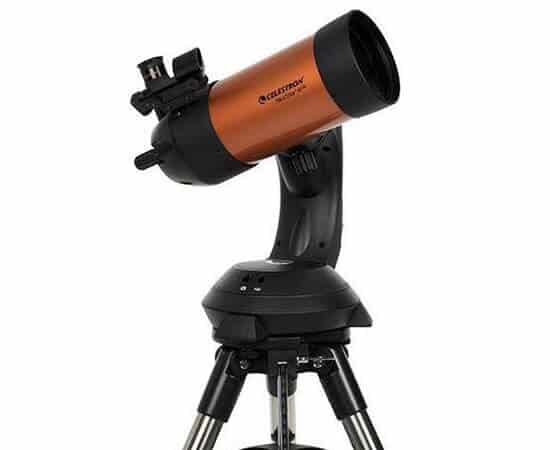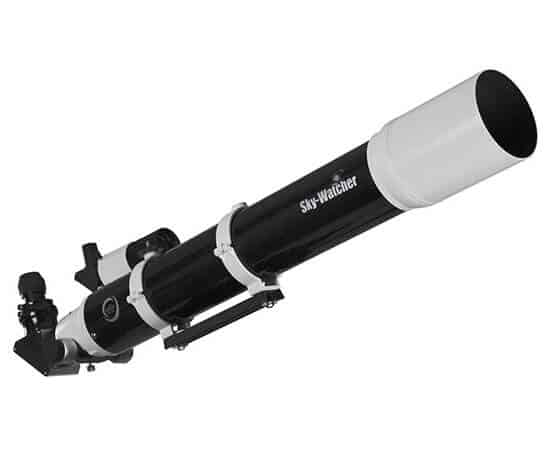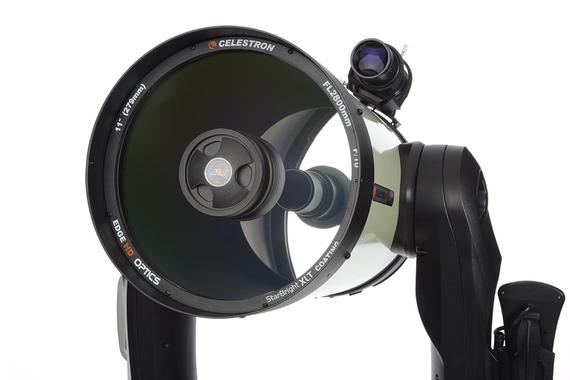How Much Does a Good Telescope Cost
A Practical Buying guide
- Last Updated On:
Introduction
A question that pops out very frequently in the Astronomy community.
For us stargazing lovers getting a good telescope is fundamental. And with such an array of brands and models in today’s market deciding which will be our next telescope is quite overwhelming.
So….
How Much Does a Good Telescope Cost?
A good telescope can cost anywhere from $200 to $8000 US dollars. Depending on if you are just starting out or if you are looking for a professional telescope, prices will differ. The characteristics of a good telescope will be defined by the intended use and the needs of a particular user.
And which one should you choose?
Well, I’m afraid that the answer is not that simple. There are so many factors involved that there’s no straight answer to this question.
But don’t worry, let us elaborate further and guide you with your decision process. So you can find the best telescope available for your own needs.
Different Tools For Different Level of Astronomers
The first distinction to this question is to categorize the tools for different technical levels.
if you are just getting your feet wet with Astronomy you won’t probably be considering a high-end telescope for Astrophotography.
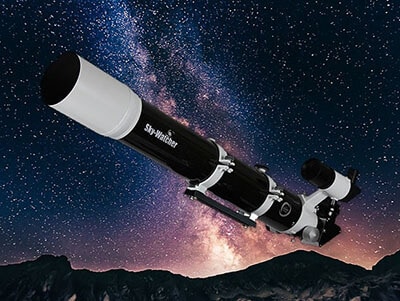
On the other hand, a seasoned Astronomer who wants to do some deep space exploration won’t be considering a beginner telescope as a good telescope.
So for this buying guide we’ll recommend good telescopes for different categories: beginner, intermediate and seasoned astronomers.
Here’s a quick rundown of the telescopes included in this buying guide.
Quick Rundown
THESE ARE OUR TOP PICKS SUMMARISED FOR:
20th April 2024

- Celestron’s iconic “orange tube” design
- 4-inch aperture provides excellent light-gathering ability

- 100 millimeter APO Refractor
- Aluminum carry case

- Produces aberration-free images
- OTA has StarBright XLT coatings
Determining Your Needs:
Once you’ve decided which level of Astronomer you are you need to establish some important factors:
Intended Use:
As you probably know there are different Telescopes for different tasks. For example, some Telescopes were designed to perform better for deep space exploration while the technical specs of others maybe suited to see details of closer objects.
It will help you a lot to define the intended use whether you want to explore our galaxy or do some Astrophotography.
Some tools that do a great job for different aspects but generally speaking getting a scope for a particular use will be the best scenario.
Table of Content
Ease of Use
While looking at high-end models might be tempting and you can be certain that they will be excellent tools. Some of them can be hard to understand. Leaving you with a much difficult learning curve before you can properly use it.
Be wise and again try to go with a telescope that meets your skills.
Portability
Frequently overlooked, portability is a crucial factor to keep in mind. There’s no use of buying a great telescope with 14″ aperture if you are planning to use it while travelling.
Your first Astronomy trip will let you want to burn the scope before moving it once again.
Budget
There’s no secret that the more expensive Telescopes are the more refined ones as well. But it’s just unreal to think that a beginner Astronomer will be getting a $3000 telescope just to get started.
So decide what amount you are comfortable spending. This will help you filter the possibilities and give you a more clear and realistic approach of what to get.
How Much Does a Good Telescope Cost?
Picks For Different Types of Users
Diving into the possibilities per category and price range.
Good telescope for beginners and amateurs
Let’s start analyzing the best telescope for starters and enthusiasts.
Primary, let’s define a logical budget: at this category, you are probably looking at a telescope cost of $200 -$500.
You have two choices try to go for a computerized telescope or if you are ready to track things manually maximize the budget and spend it on the best optics possible.
Please try to avoid the temptation of going for the cheapest telescope on the market. There are a lot of options that claim to be perfect fits for an amateur for less than a $100 bucks. But you need to go after a bare minimum of quality to ensure that your telescope will be usable and durable.
Our pick for this category is the Celestron NexStar 4SE.

APERTURE
102mm
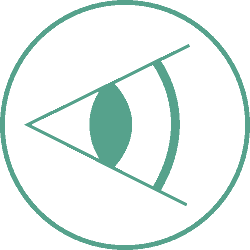
FOCAL LENGTH
1325mm

MOTORIZED
Yes

Mount type
Alt-Azimuth
Our thoughts:
Being one of the most well-known brands in the industry, Celestron is perceived to produce great telescopes that include excellent features with reasonable prices.
This is the case for the NexStar 4SE. This telescope is a great example of an entry level telescope with quality optics that offer sharp views, gathers a good amount of light and makes your life easier with it’s computerized set up.
The Sky-align system from Celestron is super beginner friendly leaving you with a motorized telescope ready to track objects in no time.
On top of that, it comes with a great steady tripod, offering a perfect solution for enthusiast that are just starting and want a complete package ready to use.
Just don’t expect to do some deep-sky object exploration with it.
Aperture:
Although this is a small scope it has a 102mm aperture that will give beginners a great amount of gathering light, making it a versatile option.
Portability:
This is a small telescope so travelling with it should not present any inconvenience.
Specifications:
Optical Design: Maksutov-Cassegrain
Focal ratio:1325
Aperture: 102 mm (4.02 in.)
Weight: 30 pounds
Eyepiece magnification: 53x
Dimensions: 32.4 in. x 27.2 in. x 13.4 in.
Coatings: StarBright XLT
Mount: Single fork arm
If you want to learn more about this particular price range we have a buying guide that covers the best telescopes under $500.
Good Telescope For Intermediate Astronomers:
Next, we have a category for Astronomers that already started their journey and have some practical knowledge. Yet there’s plenty to learn.
For this category, the logical budget will go from $500 all the way to $1000.
And there’s a particular model from Sky-watcher that we think is just the perfect fit.

APERTURE
100mm

FOCAL LENGTH
900mm

MOTORIZED
No

Mount type
-
Our thoughts:
Sky-Watcher managed to produce a very capable telescope with considerable optic quality that will attract both intermediate and some more advanced users as well. And the most interesting part is they priced the scope at a very reasonable tag (check the current price on Amazon).
And what’s even more remarkable is that is a perfect fit to get started with Astrophotography .
With its 100mm aperture and 900mm focal length you can expect about any deep sky object is going to shine in this thing.
Keep in mind this scope comes without a mount or tripod so you’ll need to add those expenses to the overall cost. The Celestron AVX equatorial mount is a great fit for it and if you’re going to do Astrophotography, a bahtinov mask (just a few dollars) is a must.
Aperture:
The 100mm Aperture is a nice spot. Leaving you with a very versatile tool that can gather all the light an intermediate astronomer could need.
Portability:
This is a compact and lightweight design. You will enjoy doing an Astronomy / Astrophotography trip and taking it for a ride.
Specifications:
Optical Design: Refractor.
Aperture (mm): 100 mm (3.94 in)
Focal Length: 900 mm (35 in)
Focal Ratio: 9.
Focal Length of Eyepiece 1: 20 mm (0.79 in)
Magnification of Eyepiece 1: 45 x.
Focal Length of Eyepiece 2: 5 mm (0.2 in)
Magnification of Eyepiece 2: 180 x.
Finderscope: 8×50 RA Viewfinder
Highest Useful Magnification: 236 x
Lowest Useful Magnification: 14 x
Limiting Stellar Magnitude: 12.5
Resolution (Rayleigh): 1.39 arc seconds
Resolution (Dawes): 1.16 arc seconds
Light Gathering Power (Compared to human eye): 204 x
Optical Tube Length: 36.22 in (920 mm)
Optical Tube Weight: 10 lbs (4.54 kg)
Good Telescope for Seasoned Astronomers
In our last category, we have something special for the more seasoned Astronomers.
Defining a budget for this category is a bit more complex because it will depend mostly on the budget available to spend.
A professional telescope can go from $1500 all the way to $8000.
You should filter the options with the amount you are comfortable spending and think hard on the intended use.
Our pick is the Celestron CPC 1100 HD Deluxe.

APERTURE
279.4mm

FOCAL LENGTH
2800mm

MOTORIZED
No

Mount type
Altitude-Azimuth Dual Fork Arm
Our thoughts:
If you are looking for the ultimate Astronomy experience you need to invest in a tool that will give you the freedom to explore everything you could imagine. And the CPC 1100 HD deluxe is a perfect fit.
It delivers superb optics, a great mount with a dual fork and the SkyAlign system with a computerized solution with a database of over 40000 objects ready to track.
It’s also ideal if you are into Astrophotography thanks for its massive 11″ inch aperture and the NexStar GoTo capabilities that make it especially useful for long exposure shots.
That’s why the CPC 1100 HD is the first pick on our buying guide for the best telescope for Astrophotography.
With the SkyQ Link 2 Wi-Fi Module you will be able to control your telescope using a smartphone or tablet.
Aperture:
Top-Notch optics with an 11 inch aperture that will gather all the light you could possibly need.
Portability:
Definitely the downside of this beast. But to be fair any telescope that has an 11 inch aperture or more will be bulky and heavy. And although it weighs 30kg it was designed to be able to handle it by one person.
Specifications:
Optical Design EdgeHD
Aperture 279.4mm (11″)
Focal Length 2800mm (110″)
Focal Ratio f/10
Focal Length of Eyepiece 1 23mm (0.91″)
Magnification of Eyepiece 1 122x
Finderscope 9×50
Star Diagonal 2″ with 1.25″ adapter
Optical Tube Aluminum
Highest Useful Magnification 660x
Lowest Useful Magnification 40x
Limiting Stellar Magnitude 14
Resolution (Rayleigh) 0.5 arc seconds
Resolution (Dawes)0.42 arc seconds
Light Gathering Power (Compared to human eye) 1593x
Secondary Mirror Obstruction 95mm (3.75″)
Secondary Mirror Obstruction by Diameter 34%
Secondary Mirror Obstruction by Area 12%
Optical Coatings Starbright XLT
Optical Tube Length 610mm (24″)
Optical Tube Diameter 312.42mm (12.3″)
Optical Tube Weight 65 lbs (29.5 kg) with mount
FAQ
How Much Does it Cost for a Really Good Telescope?
The price will vary for different users but if you are looking for high-powered telescope, good options will start from $1500 all the way up to $7000 US dollars and beyond.
What is the Best Telescope for Home Use?
The are a lot of great telescopes for home use. You probably should look for something compact and easy to use. Like the Celestron NexStar 4SE that we picked on this list.
What is Considered a Good Telescope?
A good telescope is the one that fits your needs. A good telescope for beginners will be different than a good telescope for a professional. Define your level of expertise, your intended use and be sure to go for a reputable brand (Celestron, Meade, Orion, Sky-Watcher, Explore Scientific).
Is Buying a Telescope Worth it?
Absolutely, if you are planing to get into Astronomy is a fundamental tool that will let you explore the objects on the night-sky. Letting you enjoy the practical side of this science.
Conclusion
So there you have it. We just analyzed this apparent easy question yet tricky one.
Hopefully, we did a good job helping you understand the difference of what makes a good telescope for different Astronomers and what they should cost.
If you still have some doubts you can go through our different buying guides that are designed to go in detail for each category.
Happy stargazing!!
SUBSCRIBE TO OUR WEEKLY NEWSLETTER
